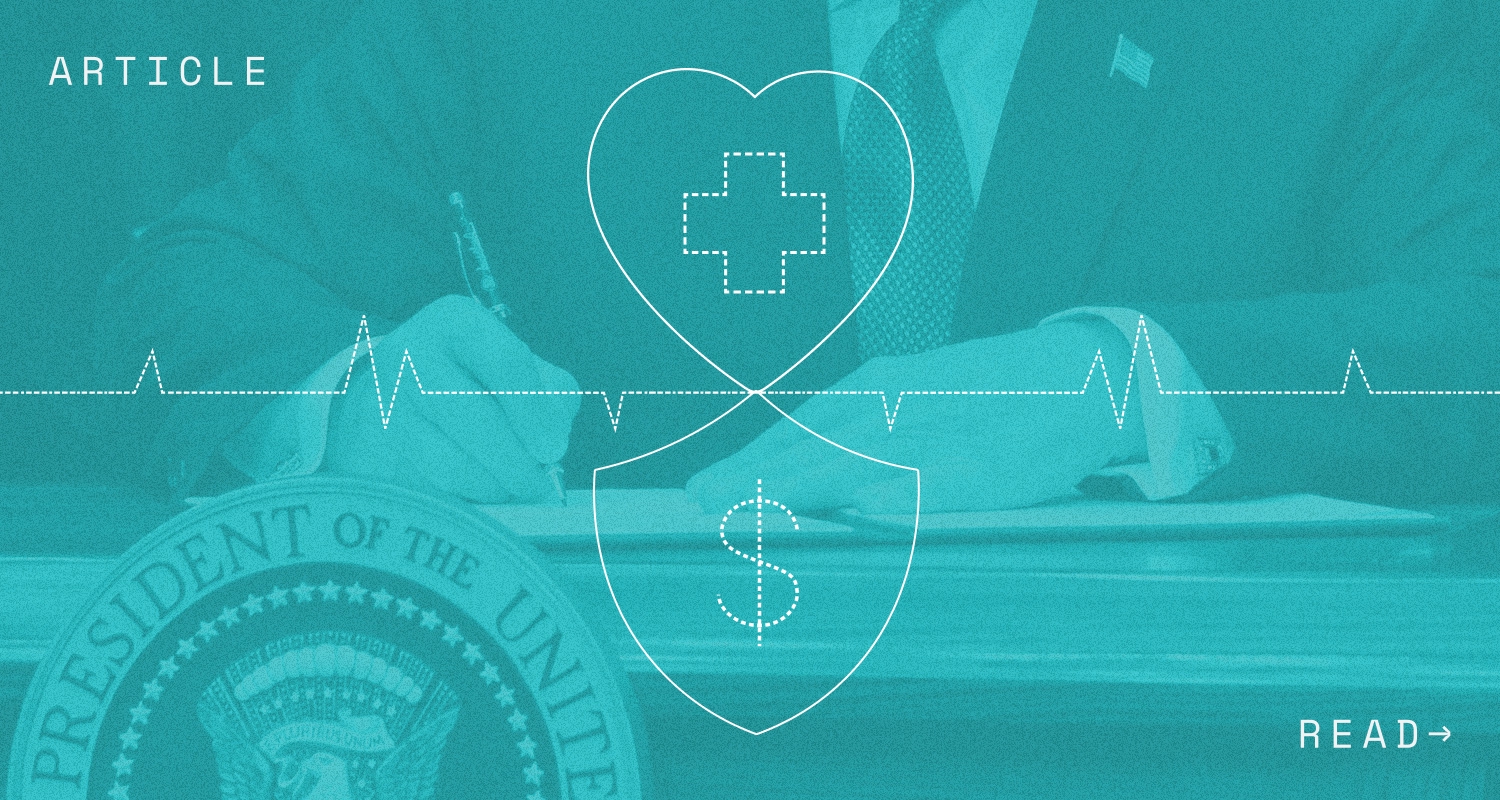The IRS released guidance for employers on the requirement to report qualified paid family and sick leave wages provided to employees in 2021 under to the Families First Coronavirus Response Act (FFCRA) and the American Rescue Plan Act (ARPA). The IRS requires employers to report qualified leave wages on W-2s to allow employees who are also self-employed to have the information necessary to claim any available FFCRA or ARPA tax credits.
Compliance Snapshot
- Eligible employers who provided qualified paid family and sick leave wages must report those amounts on employees’ 2021 Form W-2s.
- Eligible employers who claimed a tax credit for qualified family and sick leave wages are also required to separately report these wages either on employees’ 2021 Form W-2s or on a separate statement provided with employees’ Form W-2s.
Background on FFCRA and ARPA Qualified Leave Tax Credits
The FFCRA required eligible employers (those with fewer than 500 employees) to provide emergency paid sick leave (EPSL) and emergency paid family and medical leave (EFMLA) from April 1, 2020 through December 31, 2020, up to specified limits, to employees unable to work or telework due to certain circumstances related to COVID-19. Under FFCRA, workers were entitled to up to 80 hours of EPSL and up to 10 weeks of EFMLA if certain requirements were met. In turn, the FFCRA provided eligible employers with refundable tax credits (up to specified limits) to cover the cost of the required wages and healthcare expenses provided during EPSL and EFMLA leave. For more on FFCRA, see our prior blog.
Consolidated Appropriations Act of 2021 (CAA)
Though the mandate to provide paid leave expired on December 31, 2020, the CAA extended the availability of tax credits beginning January 1, 2021 through March 31, 2021 for eligible employers who voluntarily provided paid leave that satisfied the EPSL or EFMLA requirements.
The CAA did the following with respect to the original FFCRA:
- Extended the tax credit through March 31, 2021 but did not “reset” the maximum EPSL or EFMLA for which an eligible employer could claim tax credits. This means that employers who already claimed 80 hours of EPSL or 10 weeks of EFMLA for an employee prior to January 1, 2021 reached their maximum tax credit for that employee through March 31, 2021.
- Set employer tax credits equal to the qualified wages and qualified healthcare expenses provided to employees while on EPSL or EFMLA leave. For more on employer tax credits for health care expenses, see the IRS guidance on Determining the Amount of Allocable Qualified Health Expenses under FFCRA.
- Applied tax credits against the employer’s share of the social security taxes.
To claim the tax credits, eligible employers must report their total qualified leave wages for each calendar quarter on their federal employment tax returns, usually Form 941, Employer’s Quarterly Federal Tax Return.
American Rescue Plan Act (ARPA)
In March 2021, the ARPA again extended similar FFCRA tax credits beginning April 1, 2021 through September 30, 2021 for eligible employers who voluntarily provided paid leave that satisfied the EPSL or EFMLA requirements.
In addition, ARPA did the following with respect to the original FFCRA:
- Extended the qualifying reasons for qualified leave to include reasons related to obtaining the COVID-19 vaccine, recovering post-vaccination, and seeking/awaiting results of a COVID-19 test.
- “Reset” the maximum amount of EPSL and EFMLA for which an eligible employer could claim tax credits. Beginning April 1, 2021, employers could claim up to 80 hours of EPSL and up to 12 weeks of EFMLA per employee if requirements were met, regardless of whether an employer claimed EPSL or EFMLA tax credits prior to April 1, 2021.
- Set employer tax credits equal to the qualified wages and qualified healthcare expenses provided to employees while on EPSL or EFMLA leave. For more on employer tax credits for health care expenses, see the IRS guidance on Determining the Amount of Allocable Qualified Health Expenses under ARPA.
- Applied the tax credits against an employer’s eligible share of Medicare taxes (the prior iteration applied the tax credits against Social Security taxes).
Eligibility for Emergency Paid Sick Leave Tax Credits
The main provisions of the FFCRA and ARPA, including the qualifying reasons for EPSL and EFMLA and eligibility for tax credits, are outlined below.
| Legislation, Main Provisions, and Effective Dates |
| FFCRA: 4/1/20-12/31/20 -Required eligible employers to provide up to 80 hours in EPSL and 10 weeks of EFMLA -Tax credit applies to against the employer’s share of Social Security taxes |
| CAA: 1/1/21-3/31/21 -Extended FFCRA tax credits for eligible employers who voluntarily provided EPSL or EFMLA leave -Did not “reset” the maximum 80 hours of EPSL or 10 weeks of EFMLA -Tax credit applies against the employer’s share of Social Security taxes |
| ARPA: 4/1/21-9/30/21 -Extended tax credit for eligible employers who voluntarily provided EPSL or EFMLA leave -Expanded qualifying reasons for FFCRA leave (see expansion to #3) Beginning 4/1/21, “reset” employers’ maximum EPSL to 80 hours and EFMLA to 12 weeks -Tax credit applies against the employer’s share of Medicare taxes |
| Reasons for EPSL and EFMLA Leave |
| EPSL: Employee is unable to work or telework because the employee: 1. Is subject to a Federal, State, or local quarantine or isolation order related to COVID-19; 2. Has been advised by a health care provider to self-quarantine due to concerns related to COVID-19; 3. Is experiencing symptoms of COVID-19 and seeking medical diagnosis; 4. Is caring for an individual who is subject to Federal, State, or local quarantine or isolation order related to COVID-19, or has been advised by a health care provider to self-quarantine due to concerns related to COVID-19; 5. Is caring for a son or daughter of such employee if the school or place of care of the son or daughter has been closed, or the childcare provider of such son or daughter is unavailable due to COVID-19 precautions; or 6. Is experiencing any other substantially similar condition specified by the Secretary of Health and Human Services in consultation with the Secretaries of the Treasury and Labor. EFMLA: Employee is unable to work or telework because the employee is: 7. Caring for a son or daughter whose school or place of care is closed or whose childcare provider is unavailable for reasons related to COVID-19. |
| ESPL -For the same reasons as (1)-(6) above. -In addition, (3) to include the following reasons for leave: obtaining a vaccine; recovering from an injury, disability, illness, or condition related to such vaccination; or seeking or awaiting diagnostic test or medical diagnosis for COVID-19. EFMLA -For the same reasons for which an employee can take EPSL, as outlined in (1)-(6) above. |
| Maximum Tax Credit |
| From 4/1/20-3/31/21: -For reasons (1)-(3), employees must be paid at least their regular rate of pay (or the federal, state, or local minimum wage, if higher), with a maximum tax credit up to $511/day and $5,110 total -For reasons (4)-(6), employees must be paid at least 2/3 of their regular rate of pay (or the federal, state, or local minimum wage, if higher), with a maximum tax credit up to $200/day and $2,000 total -For (7), employees must be paid at least 2/3 of their regular rate of pay, with a maximum tax credit of $200/day and $10,000 in total |
| From 4/1/21-9/30/21 -For reasons (1)-(3), employees must be paid at least their regular rate of pay (or the federal, state, or local minimum wage, if higher), with a maximum tax credit up to $511/day and $5,110 total -For reasons (4)-(6), employees must be paid at least 2/3 of their regular rate of pay (or the federal, state, or local minimum wage, if higher), with a maximum tax credit up to $200/day and $2,000 total -For EFMLA, employees must be paid at least 2/3 of their regular rate of pay, with a maximum tax credit of $200/day and $12,000 in total |
Required Reporting
W-2 Reporting
Eligible employers are required to report the following on employee Forms W-2:
- The amount of qualified sick and family leave wages provided to employees from January 1, 2021 through September 30, 2021 in Box 1 of Form W-2; and
- To the extent the qualified wages are Social Security or Medicare wages, they must also be included in Box 3 (up to the Social Security wage base) and Box 5, respectively.
- To the extent qualified leave wages are compensation subject to the Railroad Retirement Tax Act (RRTA), they must also be included in Box 14 under the appropriate RRTA label. Note that RRTA primarily applies to railroad employers.
Additional Reporting Requirements
In addition to W-2 reporting, eligible employers who claim tax credits are also required to report qualified sick and family leave wages on employees’ 2021 Form W-2, in Box 14, or on a separate statement that must be included with employees’ W-2s. Eligible employers who forgo claiming tax credits are not required to separately report.
Eligible employers who claim tax credits must report the following types and amounts of qualified wages that were paid, with each amount separately reported:
- From January 1, 2021 through March 31, 2021:
- Total amount of qualified sick leave wages paid for reasons described in paragraphs (1), (2), or (3) under the FFCRA (outlined above). In labeling this amount, employers must use the following or similar language: “sick leave wages subject to the $511 per day limit paid for leave taken after December 31, 2020, and before April 1, 2021.”
- Total amount of qualified sick leave wages paid for reasons described in paragraphs (4), (5), or (6) under the FFCRA (outlined above). In labeling this amount, employers must use the following or similar language: “sick leave wages subject to the $200 per day limit paid for leave taken after December 31, 2020, and before April 1, 2021.”
- Total amount of qualified family leave wages under the FFCRA (outlined above). In labeling this amount, employers must use the following or similar language: “emergency family leave wages paid for leave taken after December 31, 2020, and before April 1, 2021.”
- From April 1, 2021 through September 30, 2021:
- Total amount of qualified sick leave wages paid for reasons described in paragraphs (1), (2), or (3) under the ARPA expansion (outlined above). In labeling this amount, employers must use the following or similar language: “sick leave wages subject to the $511 per day limit paid for leave taken after March 31, 2021, and before October 1, 2021.”
- Total amount of qualified sick leave wages paid for reasons described in paragraphs (4), (5), or (6) under the ARPA expansion (outlined above). In labeling this amount, employers must use the following or similar language: “sick leave wages subject to the $200 per day limit paid for leave taken after March 31, 2021, and before October 1, 2021.”
- Total amount of qualified family leave wages, as defined under the ARPA expansion (outlined above). In labeling this amount, employers must use the following or similar language: “emergency family leave wages paid for leave taken after March 31, 2021, and before October 1, 2021.”
If an employer decides to provide the reporting on a separate statement (instead of reporting on employee W-2s) and an employee receives a paper Form W-2, then the statement must be included with the Form W-2. If an employee receives an electronic Form W-2, the statement must be provided in the same manner and at the same time as the Form W-2.
Employer Action
- Determine whether the employer provided qualified paid family or sick leave wages to employees;
- If so, work with the employer’s payroll team or vendor to include the qualified family and sick wages on employee 2021 Form W-2s; and
- If employer claimed tax credits for qualified paid family or sick leave wages, separately report amounts on employee Form W-2s or provide a statement of amounts with employee Forms W-2.




